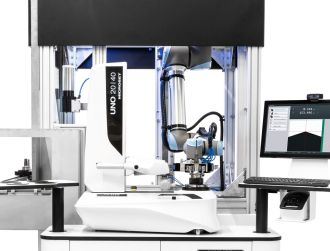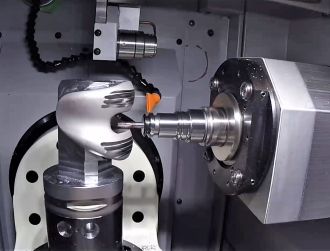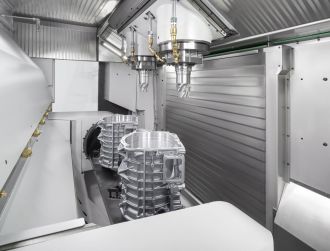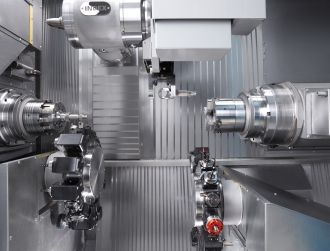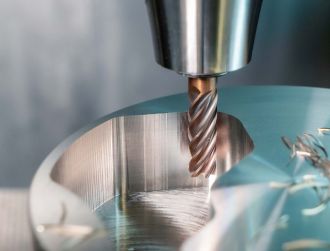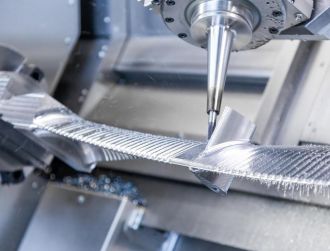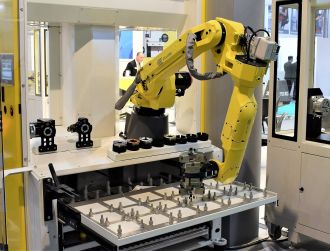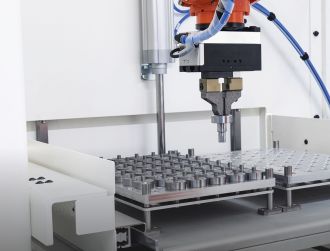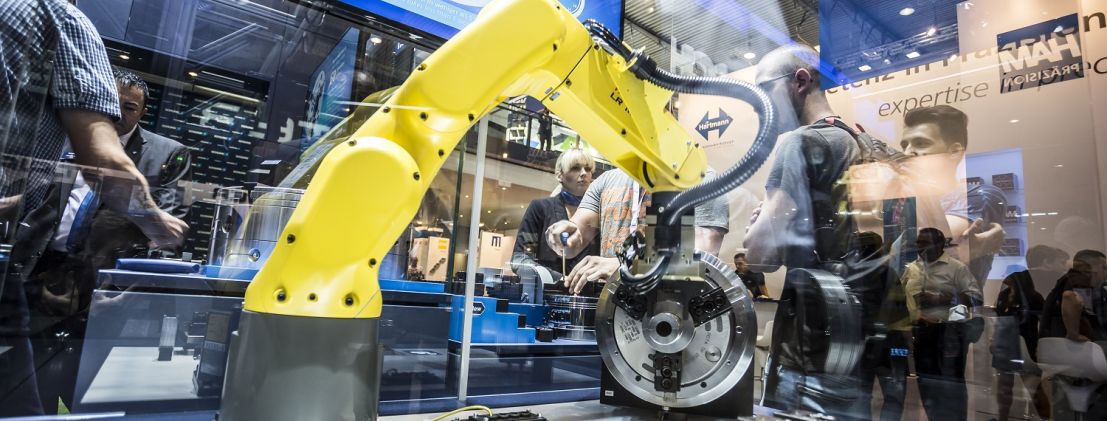
“Hands-on” digitalisation on AMB
The International Exhibition for Metal Working, which is being held in Stuttgart from 13–17 September 2022, will serve as the marketplace for the metalworking industry in Europe and beyond. A quick look at the exhibitors and their key areas of interest as you walk around the exhibition clearly shows that mechanical and electrical solutions are being enhanced to an ever greater extent by smart, digital concepts.
Efficiency, greater availability and increased productivity – this is the triad of objectives that companies in the metalworking industry are pursuing. They can be achieved with highly qualified staff and high-quality machines, tools and components – and to an ever-increasing extent through the use of digital products and services. They will play an important role at this year’s International Exhibition for Metal Working from 13–17 September in Stuttgart, Germany, and will be the focus of attention at many of the booths. For example, exhibitor Chiron is tapping the potential of digitalisation with a comprehensive portfolio of systems called SmartLine. The individual components communicate via umati, a universal interface developed by the industry initiative of the German Machine Tool Builders’ Association (VDW), which has been an established open standard for machine tool building around the world for several years now.
Digitisation modules
AMB exhibitor Hermle also focuses on automation and digitalisation. This is a combination that is becoming increasingly important, as is evident from the wide range of customer requirements. Industrie 4.0 and the desire to digitalise Hermle products are playing a significant role, particularly in growth industries with a high degree of automation. Hermle offers digital modules such as Digital Production, Digital Service and Digital Operation. Each module interlocks with the others, which will be evident in Stuttgart in September. Various functions are available as a result: Digital Operation’s “Machine Tuning” feature dynamically adjusts control parameters, thus paving the way for intelligent machining set-ups. The Digital Production module features the HTMC/HOTS tool management systems, the HIMS information management systems and the HACS automation control systems, while the Digital Service module includes remote maintenance, diagnostic and monitoring systems.
Connectivity is the only way forwards
For years now, exhibitor Grob has been working intensively on digitalisation and the development of new solutions for manufacturing and process optimisation and has come up with modular solutions. In view of the connectivity and flexible adjustment options, the applications developed by Grob can be used to connect all types of machinery and controllers from all manufacturers – not just Grob – within Grob-NET4Industry in a comprehensive digitalisation platform. This allows users to analyse the performance of their machines and optimise their processes.
In the field of edge computing, Grob4Interface offers the possibility of connecting many controllers, regardless of manufacturer, to an MES system. This gives the user the opportunity to view and control all machines uniformly in production. Combined with the customer’s enterprise resource planning system, MES facilitates order management, planning and order control on the machines. The modules within GROB-NET4Industry allow both the production and support areas relating to machining to be organised with the aim of ensuring optimal utilisation of the high-quality, high-precision machine tools. And all areas of production are linked in: from production planning, monitoring and analysis to visualisation of processes during workpiece machining right through to proactive service and maintenance.
Smart clamping devices
When it comes to clamping device manufacturers, digitalisation has an important role to play in optimising production, which the International Exhibition for Metal Working will highlight. For example, Hainbuch will be exhibiting clamping devices with integrated, intelligent measuring technology – the IQ series. It can perform many different measurements and monitoring tasks thanks to the integrated sensors. In some cases, it is even possible to cut back on measuring devices. The measured data is transmitted directly to the machine controller and evaluated via contactless data and energy transmission. The engineers from Hainbuch attach particular importance to offering a simple and intuitive user interface. Their goal is for people and robots to be able to achieve the maximum for their company in a kind of symbiosis.
But not all automation solutions can be conveniently connected via plug-and-use. Older, existing machines are often not designed for this. That is why the company Vischer & Bolli Automation was incorporated into the Hainbuch Group. They operate as a general contractor and look at the entire process from the user’s point of view. The range of solutions includes the link between the machine tool and automation system, but also covers the clamping system and tool provision. In the process, they also consider the logistical issues and activities that run parallel to production, bring them into line with each other and assist with the implementation of the findings.
Taking a smart approach to milling, countersinking or micro-machining
The iTENDO² intelligent tool holder from Schunk is also synonymous with digitalisation in tool clamping. It “notices” when something is wrong with the machining process and passes on information about excessive vibrations, chatter marks or when a tool is about to break. Equipped with a sensor, battery and transmitter unit, the smart tool holder detects vibrations on the tool itself. If the state of the cutting edge or the tool changes, it can respond in real time thanks to the closed control loop and prevent damage to the workpiece or tool.
With its maximum speed of 30,000 rpm, it can be used for a wide range of applications in the aerospace engineering, glass processing, automotive and medical technology industries. It can be used as a direct replacement for standard tool holders, eliminating the need to reprogram the machine. Its interference contour is also identical to that of standard tool holders. If the smart tool holder is ordered together with the matching tablet, it is particularly easy to set up: Using the app that comes with the tablet, the user can retrieve all important data and use it for parameterisation and trend analyses. With the iTENDO² easy connect data interface, processes can be tracked and machines monitored. In a version that is planned for a later date, it should even be possible to control processes.
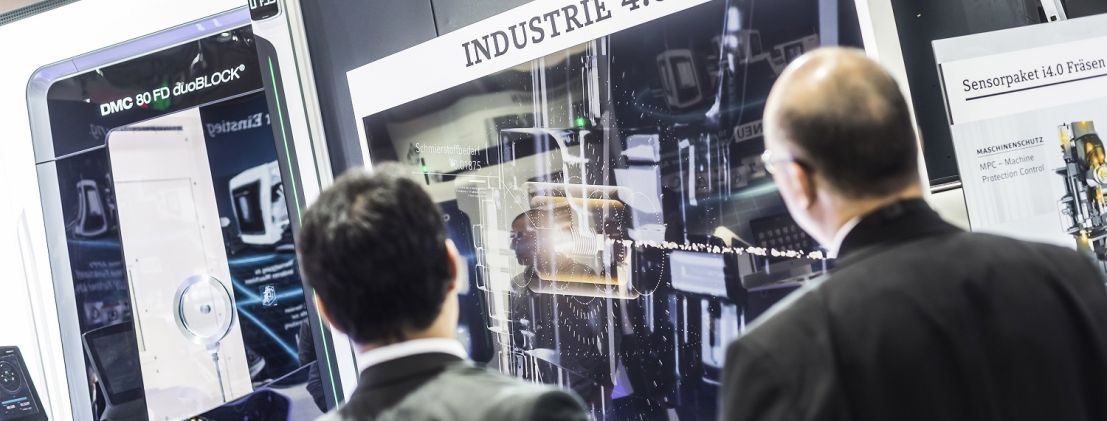
Connecting peripherals
Knoll’s mechanical engineers are noticing an increasing demand for machine data and the ability to connect it to higher-level systems. The data that is generated in any case, providing circumstantial information for the predictive control of plants, is to be used for process optimisation. Even if, from the Bad Saulgau-based company’s point of view, there is currently limited support for establishing an internet connection for peripheral devices, the company will be bringing the SmartConnect operating concept, which it has developed completely independently, to market before the end of this year.
The edge computing solution stores and processes data right there at the installations and makes it available via interfaces (e.g. wirelessly via Bluetooth). There is the option of having a cloud connection, but it is not absolutely necessary. In this way, all relevant data can be viewed and evaluated via an app and, with very little installation effort, peripheral devices can be controlled and processes monitored and optimised. Like the German Machine Tool Builders' Association (VDW), the experts at Knoll also recommend establishing a connection to the umati machine tool interface and/or relying on the OPC UA mechanism.
Smart platform consolidates data
Coscom has set itself the task of realising smart CNC production and for this purpose is consolidating production data with the help of its ECO system. The aim is to generate “object dependencies” and make them available in a targeted manner in the process – without any additional data maintenance effort. CAM, tool software, setting/measuring instruments, lifts, etc. all access a common database as required. Any systems that are added immediately have access to up-to-date information. In addition, there is constant interaction with the ERP. They are supported with information from CAD, CAM and PLM systems, for example regarding NC programs, materials and design details, or with manufacturing information such as clamping plans, drawings or videos. Technology data from the areas of tool presetting, tool management, warehousing and logistics is also integrated.
The core product is the FactoryDirector VM, which combines all production-relevant information on a central platform and at the same time networks the existing IT infrastructure, such as PLM and ERP/PPS systems, CAD/CAM and simulation systems as well as tool measuring and storage systems. This creates a manufacturing data network with the aim of generating knowledge from data. This is intended to improve productivity, increase efficiency and minimise unproductive idle time and set-up time. Existing production resources can be better utilised, the time from model to finished component is shortened and repeat part production is accelerated.
Focus on system security
Centralisation and low-hurdle access to data, however, also harbours the danger of misuse. It is precisely this issue that still prevents many decision-makers from investing in digitalisation. At the 2022 International Exhibition for Metal Working, the software and digitalisation wing of the German Mechanical Engineering Industry Association (VDMA) will focus on the topics of cyber security and digitalisation. The number of hacker attacks in the mechanical engineering and plant construction industry is on the rise. An increasing number of VDMA member companies are reporting attacks on their IT and OT (production) security.
The VDMA is working with the German state and federal police and the German Federal Office for Information Security (BSI) to improve security: “We offer member companies assistance in taking precautions to prevent attacks and help in the event of an actual attack. VDMA Software and Digitisation will be shining the spotlight on this topic, and others, at the 2022 International Exhibition for Metal Working,” says Prof. Claus Oetter, President of the trade association. “The International Exhibition for Metal Working is an important exhibition for us because it showcases innovations and advancements in the metalworking industry. Many of our member companies have a presence in Stuttgart and we are looking forward to an exciting exhibition.”

